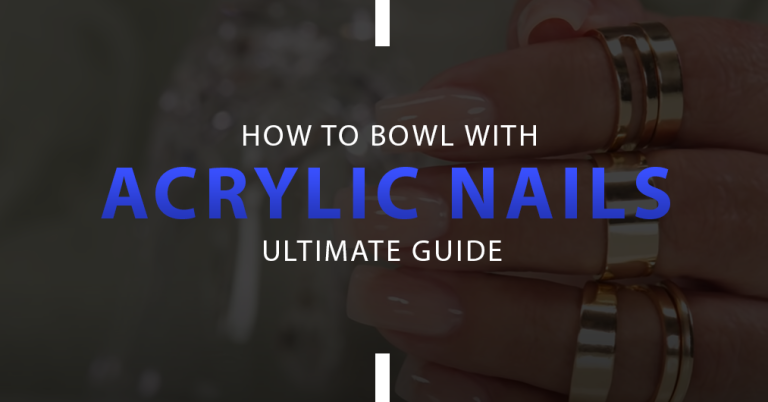Penthouse Garden Ideas: Transform Your Rooftop into a Lush Oasis
Imagine stepping out onto your penthouse terrace and being greeted by a private garden that feels like a slice of nature in the sky. That’s the magic of a penthouse garden — it’s not just greenery; it’s an escape, a retreat, and a design statement all rolled into one. For city dwellers craving calm without leaving the skyline, this is where urban luxury meets nature.
I’ve always been fascinated by rooftop gardens — watching ordinary terraces transform into lush escapes is like watching a canvas come to life. Whether it’s vertical greenery hugging the balcony rails or a cozy nook surrounded by fragrant blooms, every element can bring a sense of serenity that’s rare in bustling cities. The best part? Penthouse gardens are fully customizable: you can mix textures, colors, and even scents to create a personal oasis that suits your lifestyle. Over the years, I’ve compiled a mix of practical tips, creative ideas, and design strategies that elevate any rooftop space. Let’s explore 15 ways to turn a penthouse terrace into a verdant paradise.
1. Optimize Space with Container Gardening

Even the smallest terraces can thrive with container gardening. Think pots, raised beds, and window boxes — each plant gets its own space, and your layout remains flexible.
Pros:
- Flexibility: Move plants around to change the garden’s flow.
- Soil control: Easier to manage nutrients and drainage.
- Urban-friendly: Perfect for apartments or compact penthouses.
Cons:
- Limited growth: Containers restrict root expansion.
- Watering needs: Smaller pots dry out faster, requiring frequent attention.
Mini takeaway: Container gardening turns any terrace into a lively garden, proving that size doesn’t limit style.
2. Go Vertical with Green Walls

Vertical gardens maximize greenery without taking up floor space. Using trellises, wall-mounted planters, or modular panels, you can create a lush backdrop that’s also visually striking.
Pros:
- Space-saving: Ideal for narrow terraces.
- Aesthetic impact: Adds instant drama and depth.
- Thermal benefits: Green walls can cool your terrace naturally.
Cons:
- Installation cost: Some systems require professional setup.
- Maintenance: Pruning and irrigation can be tricky at height.
Mini takeaway: Vertical gardens bring a rainforest feel to high-rise living without crowding your floor space.
3. Incorporate a Water Feature

Nothing says luxury like the gentle murmur of water. From small fountains to reflecting pools, water adds movement and calm to rooftop gardens.
Pros:
- Relaxation: Water sounds mask city noise.
- Humidity boost: Helps plants thrive in windy rooftop conditions.
- Visual appeal: Creates reflections and a sense of depth.
Cons:
- Weight concerns: Pools require structural verification.
- Maintenance: Pumps and filters need regular cleaning.
Mini takeaway: Even a compact fountain can turn a penthouse terrace into a meditative escape.
4. Mix Seasonal Blooms

Plan your garden with a mix of perennials, annuals, and bulbs. This ensures color and interest throughout the year.
Pros:
- Year-round beauty: Constantly changing colors.
- Pollinator-friendly: Attracts bees and butterflies.
- Variety: Allows experimentation with textures and scents.
Cons:
- Plant replacement: Some species need seasonal replanting.
- Care complexity: Different plants have different requirements.
Mini takeaway: A dynamic planting schedule keeps your penthouse garden lively and ever-evolving.
5. Add Cozy Seating Areas

A rooftop garden isn’t complete without a spot to sit and soak it all in. Benches, swings, or low loungers make your garden functional.
Pros:
- Relaxation: Perfect for morning coffee or evening unwind.
- Social hub: Ideal for entertaining guests.
- View framing: Positions you to enjoy skyline vistas.
Cons:
- Space demand: Furniture can crowd a small terrace.
- Weather wear: Outdoor materials must withstand sun, wind, and rain.
Mini takeaway: Where you sit defines the garden experience — make it comfortable and inviting.
6. Use Smart Irrigation Systems

Penthouse gardens often need automated watering solutions due to exposure to sun and wind. Drip irrigation or smart sprinklers save time and keep plants healthy.
Pros:
- Efficiency: Reduces water waste.
- Consistency: Keeps plants hydrated even when away.
- Convenience: Ideal for busy urban lifestyles.
Cons:
- Setup cost: Requires initial investment.
- Technical issues: Systems can malfunction and require maintenance.
Mini takeaway: Smart irrigation ensures lush, thriving greenery with minimal effort.
7. Install Shade Structures

Rooftop gardens can get intense sun exposure. Pergolas, retractable awnings, or umbrellas protect plants and create cozy seating areas.
Pros:
- Sun protection: Prevents plant burn and fading furniture.
- Extended usability: Makes terrace comfortable in peak sun.
- Aesthetic appeal: Adds architectural interest.
Cons:
- Space consumption: Shade structures take up area.
- Wind impact: Must be sturdy against rooftop gusts.
Mini takeaway: Shade structures combine comfort and style, allowing your garden to thrive under the city sun.
8. Grow Edibles on the Roof

Herbs, veggies, and small fruit trees aren’t just practical; they make your terrace feel alive and productive.
Pros:
- Fresh produce: Enjoy herbs and veggies at arm’s reach.
- Sustainable: Reduces trips to the store.
- Aromatic: Fragrant herbs elevate the sensory experience.
Cons:
- Space limits: Only certain crops thrive in containers.
- Pollination: Rooftop gardens may need manual assistance.
Mini takeaway: Edible plants bring flavor — and life — to your penthouse garden.
9. Incorporate Modern Planters

Sleek, geometric containers complement urban architecture and keep your garden organized.
Pros:
- Visual cohesion: Matches city skyline style.
- Flexibility: Lightweight planters are easy to rearrange.
- Material variety: Metal, concrete, or ceramic suits different aesthetics.
Cons:
- Weight concerns: Large planters require careful placement.
- Cost: Designer containers can be expensive.
Mini takeaway: Modern planters give your rooftop a clean, curated feel without compromising greenery.
10. Layer Plants for Depth

Mix tall shrubs, medium perennials, and groundcovers to create a multi-dimensional space that feels lush and natural.
Pros:
- Visual interest: Layers create depth and richness.
- Microclimates: Taller plants protect smaller ones.
- Biodiversity: Attracts birds and beneficial insects.
Cons:
- Maintenance: Layered gardens need careful pruning.
- Wind exposure: Taller plants can sway or tip in rooftop gusts.
Mini takeaway: Thoughtful layering makes a penthouse garden feel like a secluded paradise.
11. Add Outdoor Lighting

Ambient lighting extends garden usability into evenings and enhances aesthetics.
Pros:
- Safety: Illuminates paths and edges.
- Atmosphere: Creates a romantic or cozy mood.
- Highlighting: Showcases plants, water features, or seating areas.
Cons:
- Electricity needs: Requires safe rooftop wiring.
- Light pollution: Bright lights can disturb neighbors.
Mini takeaway: Soft lighting transforms your garden into a magical nightscape.
12. Introduce Sculptural Elements

Art, statues, or modern installations create focal points and elevate design sophistication.
Pros:
- Visual interest: Breaks greenery monotony.
- Personalization: Reflects taste and personality.
- Conversation starter: Unique pieces make the garden memorable.
Cons:
- Space: Bulky sculptures may overwhelm small terraces.
- Cost: High-quality pieces can be pricey.
Mini takeaway: Sculptural elements combine art and nature for an elevated rooftop vibe.
13. Choose Low-Maintenance Plants

Succulents, ornamental grasses, and hardy shrubs thrive in rooftop conditions with minimal care.
Pros:
- Ease: Less watering and pruning required.
- Resilience: Tolerates wind, sun, and urban pollution.
- Consistency: Maintains greenery year-round.
Cons:
- Limited diversity: May reduce seasonal color changes.
- Aesthetic trade-off: Some low-maintenance species look plain.
Mini takeaway: Low-maintenance plants keep your penthouse garden alive and effortless.
14. Add Pergolas or Canopies

Structural features create intimacy, define spaces, and support climbing plants like wisteria or ivy.
Pros:
- Architectural beauty: Adds dimension to flat terraces.
- Plant support: Vines and climbers flourish.
- Shade: Makes sitting areas comfortable.
Cons:
- Installation: Requires planning and stability checks.
- Wind vulnerability: Must withstand strong rooftop gusts.
Mini takeaway: Pergolas marry function and style, making your garden cozy yet visually striking.
15. Create a Multi-Sensory Experience

Combine plants, water, seating, scents, and textures to stimulate all senses and make the terrace a true sanctuary.
Pros:
- Full immersion: Engages sight, smell, touch, and hearing.
- Stress relief: Urban escape for body and mind.
- Unique ambiance: Personal retreat tailored to lifestyle.
Cons:
- Complexity: Requires careful planning and balance.
- Maintenance: Multiple elements demand consistent care.
Mini takeaway: A multi-sensory penthouse garden turns a rooftop into a personal haven, where every visit feels rejuvenating.
Conclusion
A penthouse garden is more than a collection of plants — it’s an elevated lifestyle, a rooftop retreat, and a canvas for creativity. From container gardening to vertical walls, water features to sculptural accents, each idea offers a unique way to maximize space, beauty, and serenity. The key is balance: layering plants, adding textures, and thinking about sensory experiences transforms a simple terrace into a lush, livable paradise.
IMO, the true joy of a penthouse garden comes from combining function with design. Even a small terrace can feel expansive when thoughtful layouts, greenery, and personal touches come together. So, grab some planters, dream big, and let your rooftop bloom — the skyline is your garden’s backdrop.

William Martin is a passionate bowler who spends most of his weekends playing the sport. With years of intense experience under his belt, William decided to share his knowledge by creating BOWLING OCEAN. Join me on this journey to explore the world of bowling and discover the tips and tricks to becoming a pro.






